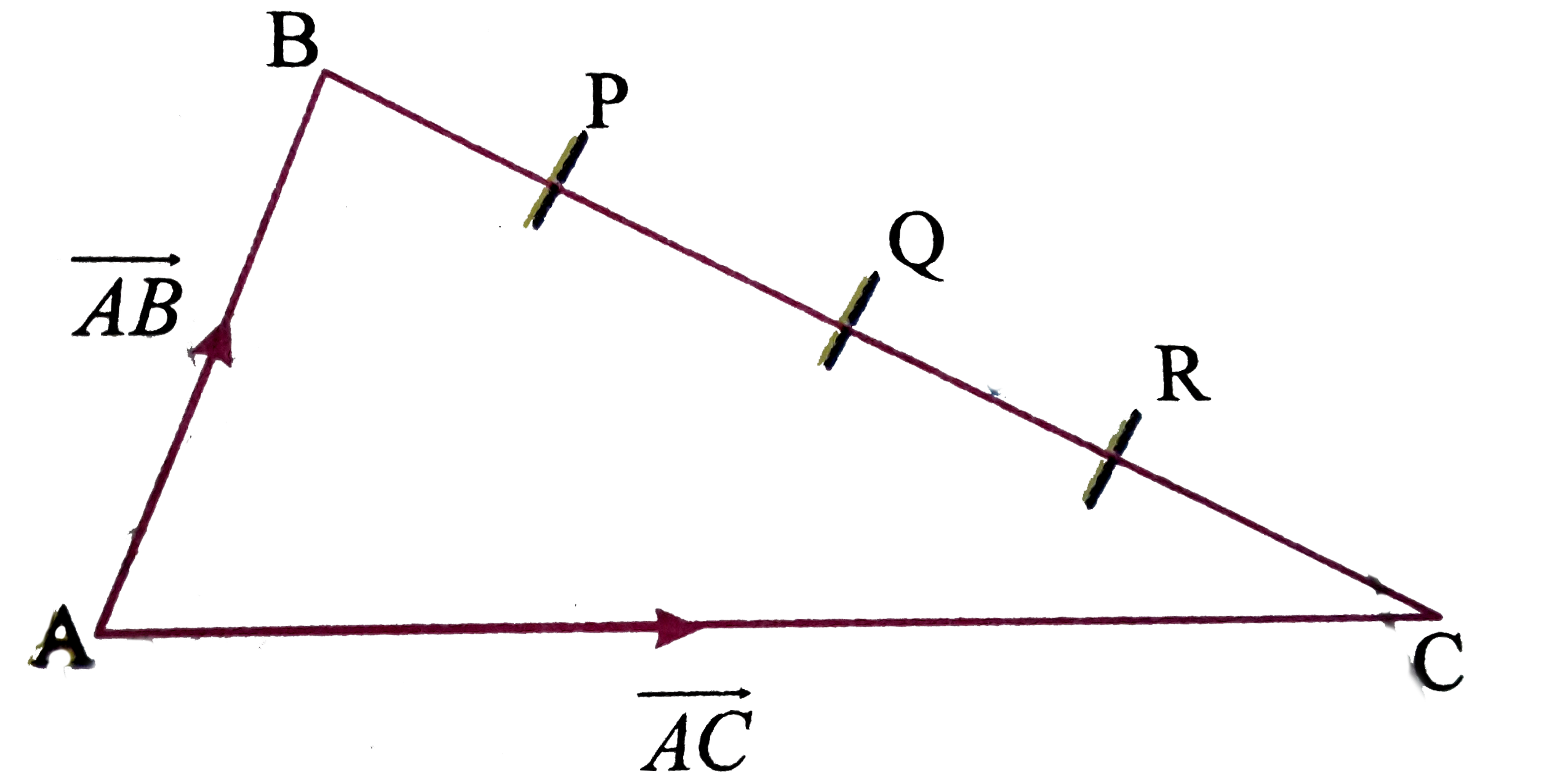BC is divided into four equal parts by P,Q and R.The resultant of −−→AB and 3−−→AC is

−−→AR
4−−→AR
4−−→AP
−−→PQ
The correct Answer is:B
−−→AC+−−→CB=−−→AB,−−→AC+−−−→4CR=−−→AB
−−→AC+→4((AR)−−−→AC),→4(AR)−3−−→AC=−−→AB
∴−−→AB+3−−→AC=4−−→AR
Topper's Solved these Questions
- MOTION IN A PLANEBOOK - NARAYNACHAPTER - MOTION IN A PLANEEXERCISE - NCERT BASED QUES. SINGLE ANS.
8 Videos
- MOTION IN A PLANEBOOK - NARAYNACHAPTER - MOTION IN A PLANEEXERCISE - NCERT BASED QUES. MORE THAN ONE OPTION
6 Videos
- MOTION IN A PLANEBOOK - NARAYNACHAPTER - MOTION IN A PLANEEXERCISE - Level-II(C.W)
45 Videos
- MECHANICAL PROPERTIES OF SOLIDSBOOK - NARAYNACHAPTER - MECHANICAL PROPERTIES OF SOLIDSEXERCISE - LEVEL-II (H.W)
24 Videos
- MOTION IN A STRAIGHT LINEBOOK - NARAYNACHAPTER - MOTION IN A STRAIGHT LINEEXERCISE - Level 2 H.W
29 Videos
Similar Questions
Knowledge Check
What is the angle between →P and the resultant of (→P+→Q) and (→P−→Q)
AZeroBtan−1(P/Q)Ctan−1(Q/P)Dtan−1(P−Q)/(P+Q)Two vectors →P and →Q are added, the magnitude of resultant is 15 units. If →Q is reversed and added to →P resultant has a magnitude √113 units. The resultant of →P and a vector perpendicular →P and equal in magnitude to→Q has a magnitude
A13 unitsB17 unitsC19 unitsD20 unitsABC is isosceles triangle, right angled at A. The resultant of the forces acting along −−→AB,−−→AC with magnitudes 1AB and 1AC respectively is the force along −−→AD, where D is the foot of the perpendicular from A on BC. The magnitude of the resultant is:
A(AB)(AC)AB+ACB1AB+1ACC1ADDAB2+AC2(AB)2(AC)2
The sum of two forces →P and →Q is →R such that ∣∣→R∣∣=∣∣→P∣∣ .The angle θ (in degrees) that the resultant of 2→P and →Q will make with →Q is
View SolutionProve that the resultant of the vectors represented by the sides −−→AB and −−→AC of a triangle ABC is 2−−→AD, where D is the mid - point of [BC].
View SolutionIf ∣∣→P∣∣>∣∣→Q∣∣, what is the angle between the maximum resultant and minimum resultant of the two vectors →P and →Q ?
View SolutionIn a quadrilateral ABCD. −−→AC is the bisector of −−→AB and −−→AD, angle between −−→AB and −−→AD is 2π/3 . 15∣∣∣−−→AC∣∣∣=3∣∣∣−−→AB∣∣∣=5∣∣∣−−→AD∣∣∣. Then the angle between −−→BA and −−→CD is.
View SolutionThe resultant of two vectors →P and →Q is →R. If →Q is doubled then the new resultant vector is perpendicular to →P. Then magnitude of →R is :-
View Solution
